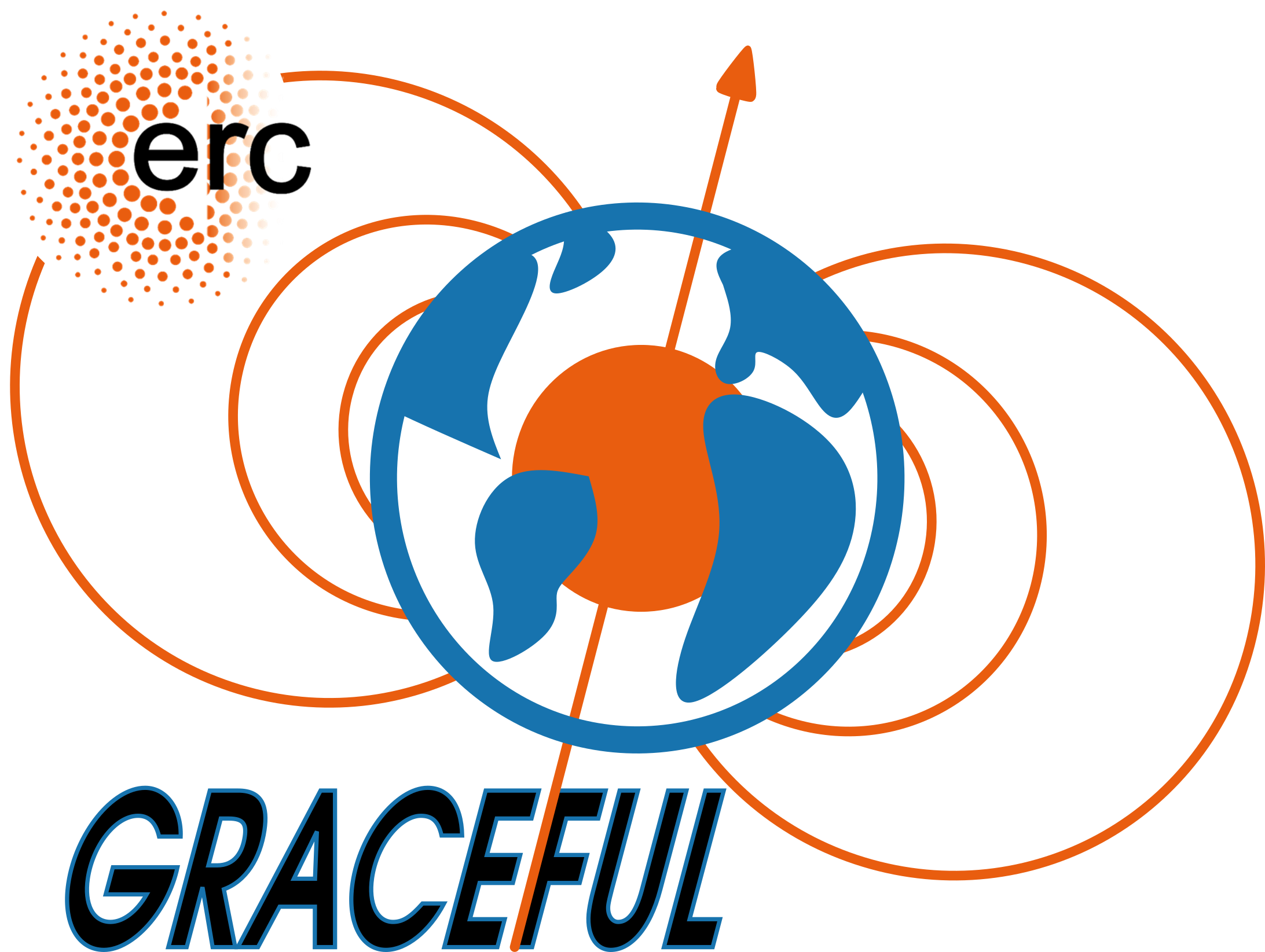Home
The GRACEFUL project
The GRACEFUL (GRavimetry, mAgnetism, rotation and CorE FLow) project is a Synergy Grant (Number 855677)
from the European Research Council (ERC) under the European Union’s Horizon 2020 research and innovation programme.
We rely on satellite and ground-based observations to understand what happens deep inside the Earth. The GRACEFUL project uses these observations,
along with numerical models, to investigate the dynamics of the fluid iron-rich outer core. By integrating data on Earth’s rotation with gravity and
magnetic fields, GRACEFUL offers an innovative approach to investigating the dynamic processes occurring within the core and at the core-mantle boundary.
The project is led by three principal investigators, each responsible for one of the main research areas of GRACEFUL.

Summary of the project's context and overall objectives for GRACEFUL.
What is the problem/issue being addressed?
GRACEFUL is a project that addresses challenges in the current understanding of the deep interior of our planet, particularly within the fluid core. It combines the latest observations of the Earth's gravity field, magnetic field, and rotation, while also developing precise models of core flows to open new frontiers in Earth’s interior research.
The key scientific questions we address with this novel approach include:
- What flow motions in the liquid core explain the observed magnetic field, its secular variations, and jerks, as well as the observed variations in the length of the day (LOD) at decadal and sub-decadal timescales?
- What global motions in the core operate at these timescales?
- How does core flow near the core-mantle boundary (CMB) affect temporal gravity and LOD variations?
- What roles do the core, the core-mantle boundary, and the lower mantle play in explaining observed variations in gravity, the magnetic field, and LOD?
- Can we predict changes in core flow, the magnetic field, and LOD variations, along with core contributions to gravity?
Why is it important for society?
Understanding the changes in Earth’s magnetic field—especially as they occur more rapidly than expected—is crucial for our society. Knowing how the Earth rotates and precisely orienting it in space requires insights into what’s happening inside the core and at the core-mantle boundary.
Studying the Earth's deep interior is a dynamic field that continues to evolve and captures public interest. Accumulating seismic data provides essential information about the material and physical properties of the Earth's interior. However, we still rely on indirect observations to grasp the fluid iron-rich outer core dynamics. In addition to seismic waves, the magnetic and gravity fields, as well as the Earth's rotation (particularly the Length of Day, or LOD) provide invaluable insights into processes deep within the Earth.
The magnetic field, mainly generated by the fluid outer core and its temporal variations, allows us to infer fluid core motions over decadal and sub-decadal timescales. The Earth's gravity field also undergoes temporal variations, reflecting changes in mass distribution within the planet and its surface. These gravity changes, occurring over various timescales—especially decadal and interannual— are primarily influenced by surface factors like the global water cycle and climate-driven land ice loss, but they also reveal the gravitational signature of core flow affecting the core-mantle boundary and reaching into the lower mantle. Additionally, variations in Earth’s rotation (LOD) occur on similar timescales and are typically attributed to fluid core motions that exchange angular momentum at the core-mantle boundary.
Scientific progress is most effective when combining observations and models. New sources of observational data and innovative techniques can significantly enhance our understanding of the Earth system. In this project, we aim to discover the full potential of recent observations of the Earth's gravity field, magnetic field, and rotation. By synergizing these observations with core flow models, we seek to uncover new insights into the dynamic processes occurring within the fluid core and at the core-mantle boundary. This research not only advances our scientific knowledge, but also significantly influences society's understanding of Earth's behavior.
